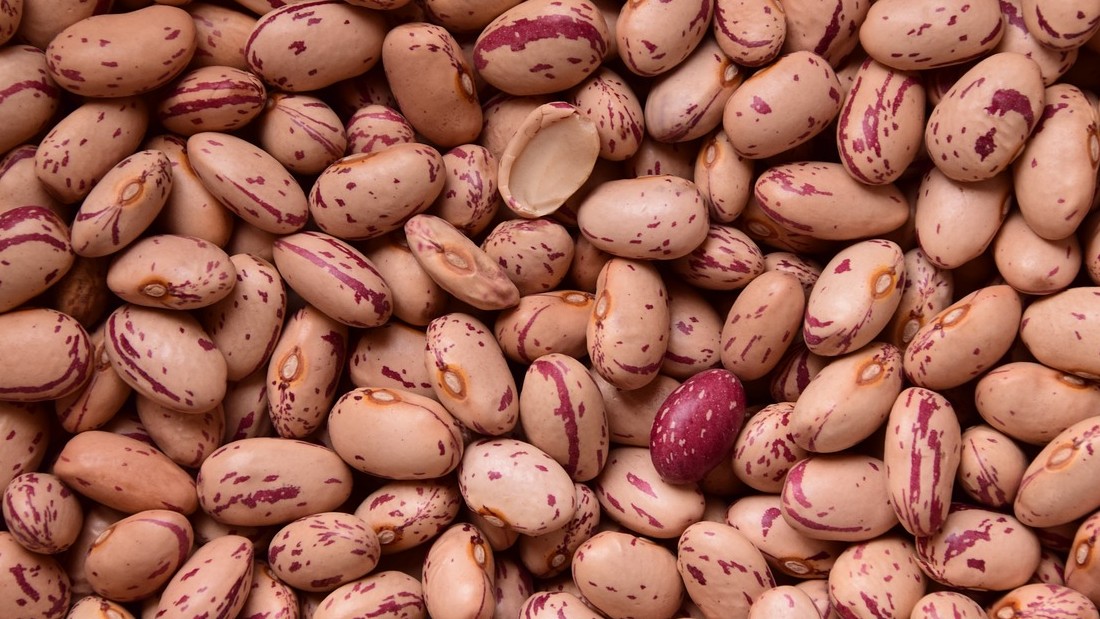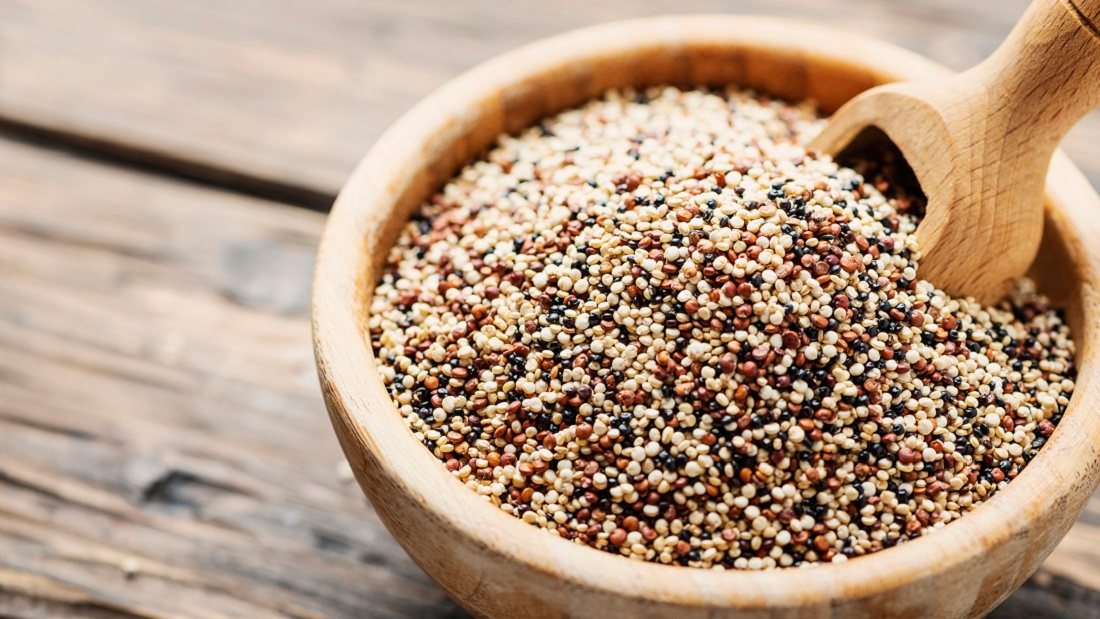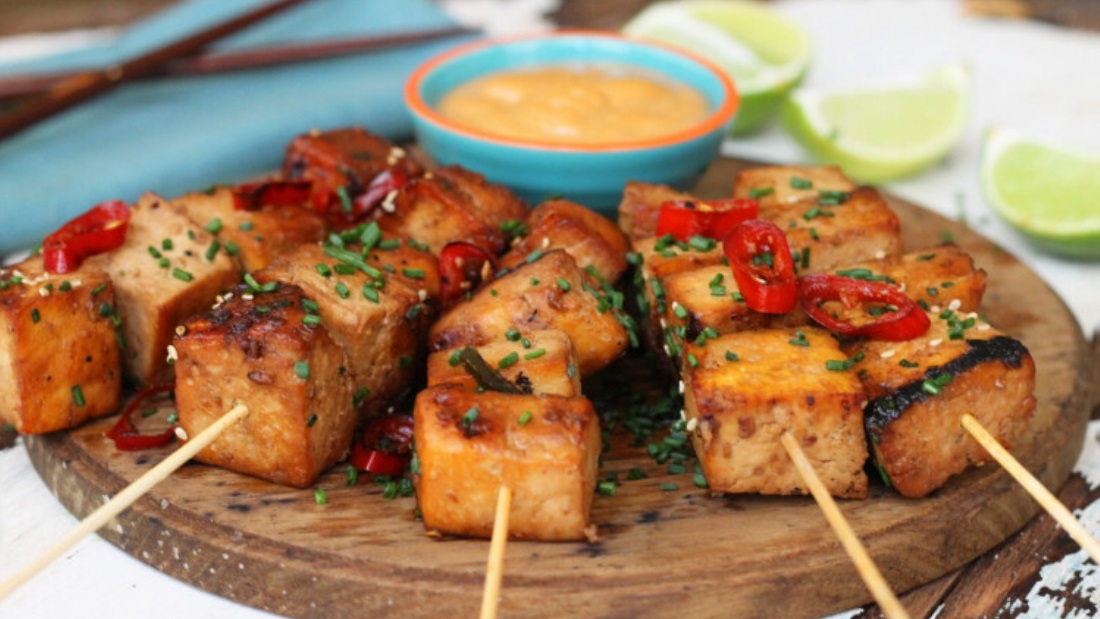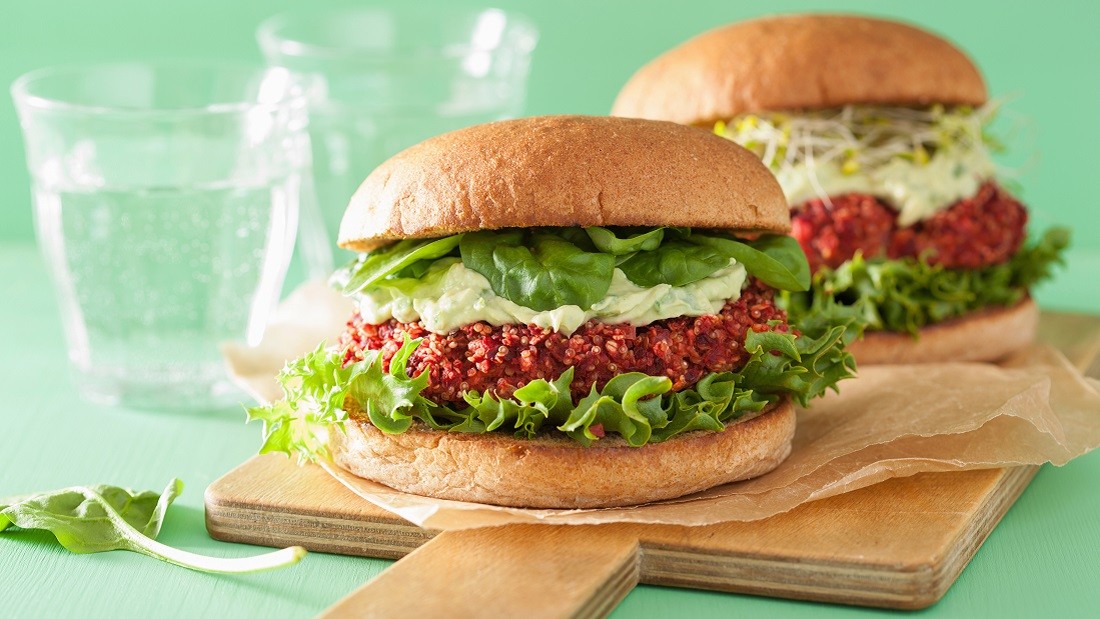Protein

How much do you need daily?
On average, men should eat 55 grams and women 45 grams of protein daily.
According to current guidelines, an average person needs 0.8 grams of protein daily per kilogram of bodyweight. So for example if you’re a woman, moderately physically active and weigh 65 kilograms, you need around 52 grams of protein a day; if you’re an active man weighing 88 kilograms, you’ll need around 70 grams of protein. If you want to build more muscle, you’ll need to increase your protein intake according to your physical activity and how much muscle you want to put on – elite athletes eat up to two grams of protein per kilogram of bodyweight daily.
Children, adolescents and breastfeeding women need a bit more protein than 0.8 grams per kilogram of bodyweight but it’s not rocket science, simply make sure you include good protein sources in your daily diet, alongside healthy carbs and fats.
The government recommends the following intakes
| Age | Amount of protein recommended each day (grams) |
|---|---|
| 0-3 months | 12.5 |
| 4-6 months | 12.7 |
| 7-9 months | 13.7 |
| 10-12 months | 14.9 |
| 1-3 years | 14.5 |
| 4-6 years | 19.7 |
| 7-10 years | 28.3 |
| Males | |
| 11-14 years | 42.1 |
| 15-18 years | 55.2 |
| 19-50 years | 55.5 |
| 50+ years | 53.3 |
| Females | |
| 11-14 years | 41.2 |
| 15-18 years | 45.4 |
| 19-50 years | 45.0 |
| 50+ years | 46.5 |
| During pregnancy | +6 |
| Breastfeeding 0-6 months | +11 |
| Breastfeeding 6+ months | +8 |
Are we getting enough?
Most people in the UK get more than enough protein. The 2014 UK National Diet and Nutrition Survey found that the average daily protein intake for men was 85 grams per day and for women, 65 grams. For most people, the average daily intake is at least 130 per cent of the recommended daily amount.
Why do we need it??
Protein is an essential part of all our cells. We need it for many vital reactions and processes in the body, as a component for hormones and many other body functions. Protein consists of different types of amino acids, some of which the human body can manufacture but there are nine amino acids that we need to have in our diet because our bodies can’t make them.
You might have heard of ‘complete’ protein. It refers to protein that contains all nine essential amino acids so it’s a complete package in terms of your protein needs. In the plant kingdom, examples include soya, black beans, quinoa, chickpeas, cashew nuts, pumpkin seeds, chia seeds and pistachios. There used to be a myth that you need to combine foods to get ‘complete’ protein but that is now considered outdated thinking – if you eat enough in a day and have a varied, healthy diet, you’re getting all the protein (all the amino acids) you need.
When looking at protein content, don’t forget to consider how much of the food you actually eat. If you start the day with toast, hummus and cherry tomatoes; lunch on lentil dahl, spinach and a small portion of brown rice; and for dinner, have a medium baked potato with a vegan frankfurter and baked beans, your protein intake would be 58g. On another day, toast and peanut butter for breakfast, two sausage rolls with a green salad for lunch and vegan spaghetti bolognaise for dinner, made with vegan mince, adds up to 46g. Alternatively, a medium-sized bowl of muesli with soya milk and a banana, a falafel and hummus wrap and a tofu-stir-fry with mixed seeds also adds up to 46g.
These suggestions don’t include drinks, soya milk or fruit so the final figure will be even higher. It’s simple – consume enough calories in a varied vegan diet and you’ll get the protein you need.
Years of advertising and marketing of products with high protein content have created this myth that we constantly need to be looking for more and better sources of protein but nothing can be further from the truth. Most people in Western societies have the opposite problem – far too much protein – and protein deficiency is almost unheard of. If you eat a healthy and varied vegan diet, protein won’t be on your worry list!
For more information see our protein fact sheet.
Do I need a supplement?
Unless you’re a professional athlete or do extremely physically demanding work, you probably don’t need protein powders and supplements.
The best plant sources

Quinoa
The best plant sources of protein include pulses (lentils, beans, chickpeas, peas and soya), nuts, seeds and wholegrains (wholemeal bread, wholewheat pasta and brown rice). One large serving of cooked tofu could provide up to half the protein you need in one day!

Tofu Skewers
Signs of deficiency
Protein deficiency is very rare in Western societies and usually the result of disease or ageing rather than diet. Generally, as long as you’re getting enough calories, you’re getting enough protein. If you are missing out, symptoms might include: low energy levels, fatigue, poor concentration and trouble learning, loss of muscle and weakened immune system leading to increased infections.
Kwashiorkor is a disease caused by protein deficiency. Symptoms include a badly swollen abdomen. Kwashiorkor is common in developing countries because people may not get enough protein in their diet.
Foods to include
| Food | Grams of protein per serving | % of recommended daily amount for women (45 grams) | % of recommended daily amount for men (55 grams) |
|---|---|---|---|
| Quinoa, raw (180g) | 24.8 | 55 | 45 |
| Tofu, steamed or fried (100g) | 23.5 | 52 | 43 |
| Veggie burger – soya based (115g) | 19.1 | 42 | 35 |
| Oats (160g) | 17.4 | 39 | 32 |
| Bean-burger (115g) | 12.2 | 27 | 22 |
| Wholemeal spaghetti (220g) | 10.3 | 23 | 19 |
| Peanut butter (thickly spread on two slices, 40g) | 9.0 | 20 | 16 |
| Chickpeas (three tablespoons, 105g) | 7.6 | 17 | 14 |
| Kidney beans – canned (three tablespoons, 105g) | 7.2 | 16 | 13 |
| Mixed nuts (one handful, 30g) | 7.1 | 16 | 13 |
| Baked beans in tomato sauce (135g) | 6.8 | 15 | 12 |
| Cooked wholegrain rice (180g) | 6.5 | 14 | 12 |
| Peanuts – dry roasted (small bag, 25g) | 6.4 | 14 | 12 |
| Hummus (2-3 tablespoons, 90g) | 6.1 | 14 | 11 |
| Walnuts (12 halves, 40g) | 5.9 | 13 | 11 |
| Almonds (12 nuts, 26g) | 5.5 | 12 | 10 |
Source: Public Health England: McCance and Widdowson’s The Composition of Foods Integrated Dataset.
Additional information
Plant protein differs from animal protein in a number of ways. Animal protein contains higher levels of sulphur, which puts more strain on kidneys and the metabolism. High intakes of animal protein have been linked to disease and early death. It could be because animal protein raises your levels of the growth hormone insulin-like growth factor 1 (IGF-1), which increases the risk of cancer. Animal protein also promotes harmful acid production and encourages toxic gut bacteria. All these are detrimental to health but they can also increase levels of inflammation and undermine blood vessel health, especially if there’s already damage such as arterial plaques.
Years of advertising and aggressive marketing of high-protein foods have fed into the myth that vegans somehow miss out when the opposite is true. Research consistently shows protein intake among vegans is more than sufficient (and healthier) while in meat-eaters, it frequently exceeds recommended intake levels by a considerable amount, potentially increasing the risk of heart disease, diabetes, cancer and osteoporosis.
Plant protein offers protection against a range of diseases, promoting a longer, healthier life.
Swapping animal protein for plant protein reduces the risk of disease. Eat a healthy vegan diet and you’ll get enough protein – plant protein – the good stuff!

This post has been categorised in: A-Z of nutrients, A-Zs, Health




